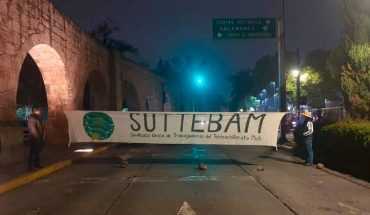For reasons associated with the COVID-19 pandemic or lack of financial resources, 5.2 million students, between the age of 3 and 29, did not enroll in the 2020-2021 school year, the National Institute of Statistics and Geography (Inegi) reported.
This figure exceeds the PMI’s estimate in August last year, which estimated 10% of aeration in basic education, which would amount to 2.5 million primary and secondary school students and 8% at the top level, or 325,000 university students.
In fact, the unit had not made public information on the impact of the pandemic on dropout, as by 2021 it has delayed updating educational statistics and has not delivered the requested data via transparency either.
The COVID-19 Impact Measurement Survey on Education (ECOVID-ED) 2020 is the first official information on education and reveals that 5.2 million students from 3 to 29 years of age (9.6% relative to the total population of that age) are not enrolled by COVID-19 for lack of money or resources for the 2020-2021 school year.
Of these, 3 million are basic (preschool, primary and secondary) and 1.3 million were not registered for COVID-19 and 1.6 million for lack of financial resources. In addition to the 5.2 million, 3.6 million did not sign up because they had to work.
On the reasons associated with the pandemic for not enrolling, 26.6% of respondents consider distance classes to be un functional for learning; 25.3% point out that one of their parents or guardians was out of work, and 21.9% lack a computer, other device or internet connection.
Meanwhile, among the reasons for pupils between the age of 3 and 29 who did not complete the 2019-2020 school year, that is, they dropped out of school during the pandemic, it was because they lost contact with their teachers or were unable to do homework (28.8%), someone in the house ran out of work or reduced their income (22.4%), the school closed permanently (20.2%) and lacked a computer, other device or internet connection (17.7%).
The population that refers to not having registered due to lack of resources reaches the following percentages: The group of 13 to 15 years (1.1%); 16 to 18 years (5.6%); from 19 to 24 (12.5%); from 25 to 29 years (10.9%).
For the response associated with “had to work” stands out the group of 16 to 18 years (4.4%), from 19 to 24 years (13.1%), and for the group of 25 to 29 years (20%).
With regard to the population data referring to not having been registered for pandemic-related reasons, it must be indicated by 1.4% for the age of 6 to 12 years, for ages 13 to 15 you have 4.8%, you increase the non-registration fee for COVID-19 for the 16 to 18 year old group with 6.8% and for the age of 19 to 24, indicating 5.2%.
In total there were 32.9 million people enrolled in the 2020-2021 school year, of which 90% are in public institutions and 10% in private. Of those not enrolled in the new school year, 1.5 million are from public schools and 243 thousand from private schools.
And of the population enrolled in the 2019-2020 school year and enrolled in 2020-2021 (30.4 million), 302 thousand changed from private to public school (1.0%) 285 thousand (0.9%) changed from public school to private school.
The survey was conducted by the Inegi through telephone interviews, under the sampling framework that derives from the National Numbering Plan of the Federal Telecommunications Institute (IFT) of both mobile and landline phones; given its probabilistic selection, it allows to expand its results for the population of the country (94% of the telephone user population).
What we do at Animal Politics requires professional journalists, teamwork, dialogue with readers and something very important: independence. You can help us keep going. Be part of the team.
Subscribe to Animal Politics, receive benefits and support free journalism.#YoSoyAnimal





